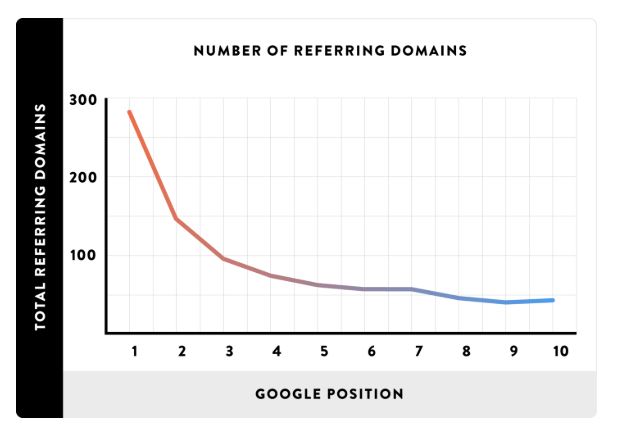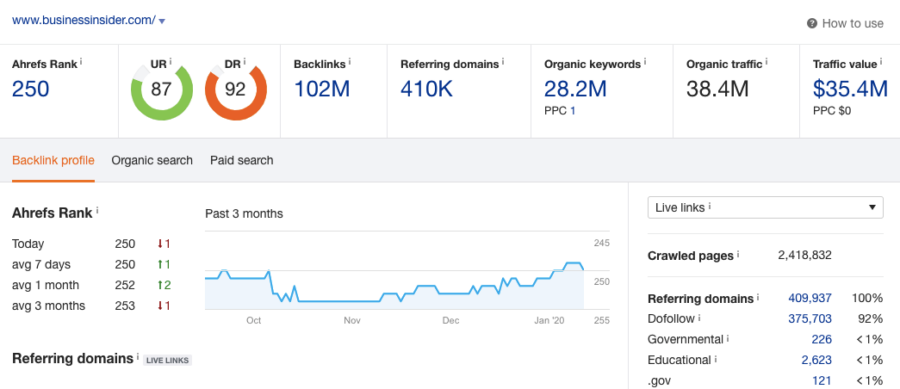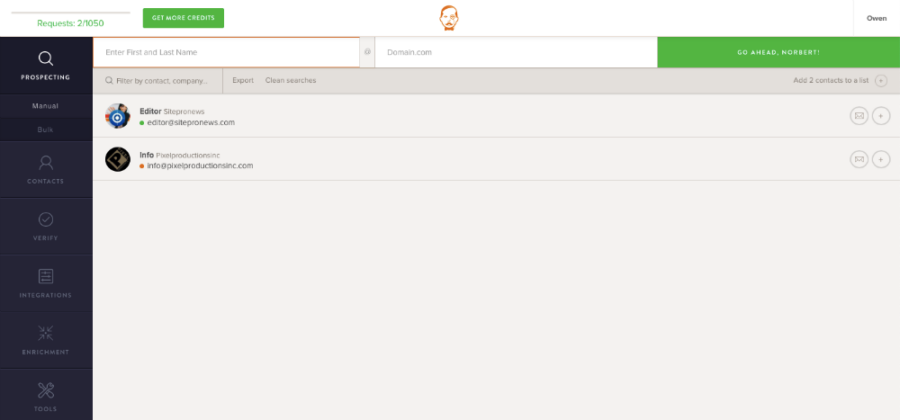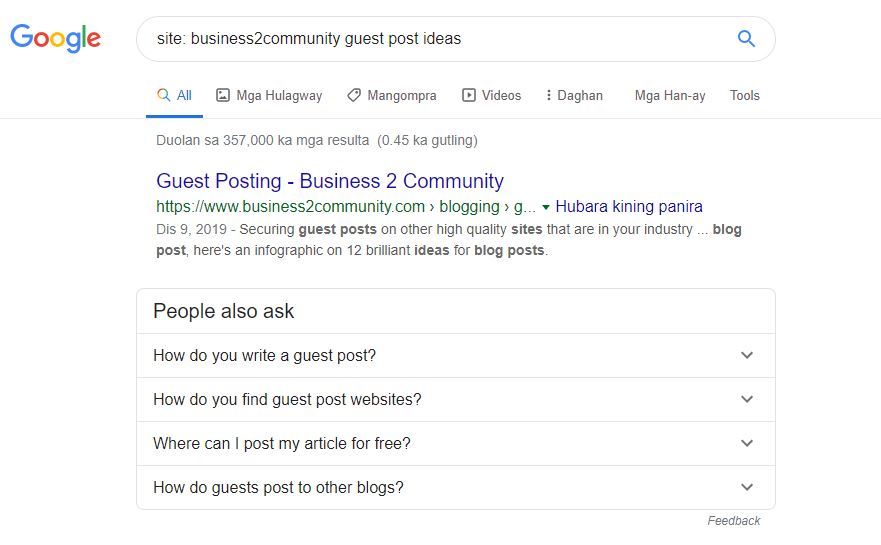The fundamentals of SEO are not so complex. You need to create good content that aligns with a relevant keyword and then build backlinks to the content.
That’s it.
This importance of backlinking cannot be emphasized enough. There is, after all, a link between the number of referring domains and a website’s Google ranking (of course there are other factors that affect Google ranking, but you get my point). This graph from Backlinko best illustrates that link.

Source: Backlinko
Because of this proven link, backlinking should always be a carefully thought out process. This is the main reason SEO is so difficult. In this article, though, I will share a strategy you can use to scale your link building efforts.
Let’s begin.
How to Assess the Quality of Backlinks
Many of the common metrics to rank a site that are used by SEO experts are based on the principles of PageRank. PageRank was what Google’s algorithm used (note the past tense) to rank content in search results.
There are basically two things you need to know about PageRank.
First is that it uses a grading system from 0 to 10 to rank websites.
Second, is how PageRank applies this grading system. Under the system, backlinks were given a value. If one piece of content had more high value backlinks than another, the more likely it would be for it to rank higher in search results for relevant keywords.
Now that you know this, let’s take a look at some of those common metrics to rank a site at present. Look at the similarities in the principles used by PageRank then:
- Domain Authority / Domain Rating: Websites are linked on a scale of 0-100. Moz and Ahrefs developed the ranking systems, respectively
- Trust Flow: A website’s trust flow is the proportion of many good backlinks it has to “spammy” links. Based on this, a website is given a score from 0-100. Majestic promotes Trust Flow as a ranking metric.
- Relevance: If a website has too many links outside of your niche, Google might raise a red flag
- Website Traffic: The more traffic a website has, the higher the chances a person sees its content and clicks on a link
These are the parameters of what for me constitutes a good backlink:
- Niche relevant
- With a DR/ DA 50+
- Trust Flow of 18+
- Website traffic of 5,000+ per month
You can use these same parameters for your backlinking campaign, or make your own. Your parameters will depend on what you prioritize the most.
How to Select Suitable Websites For Outreach
The next step in backlinking is creating a list of websites to contact. It’s best to base this list on your competitors’ own list.
To do this, come up first with a list of relevant sites in your niche. Next, start reviewing each sites’ backlinks using a premium SEO Tool.
After I type Business Insider, a competitor of Business2Community for which I write, for example, you see the site has 410k referring domains.
From the list of referring domains which I exported, I automatically delete all of the sites with a DR below 40. Since mass outreach in sites with a DR of 80+ is not as effective, I also isolate those sites onto a different list.
You can filter the resulting list of referring domains for relevance using the Majestic SEO tool and review the list manually for niche relevance to come up with a final list of sites you can contact for your outreach.
How to Find the Contact Details of an Editor
For sites in your final list with a DA/DR of 40-79, I usually reach out to the editors or website managers via a mass outreach.
I suggest using an e-mail finder, which is pretty easy to use.
Just insert the name of the site, and the email finder will search for those email addresses that are associated with the domain. I suggest doing this for at least 100 sites.
For websites with a high DR/DA, my colleagues like reaching out to website editors via LinkedIn. Just enter the LinkedIn details of a site and search for the relevant job title. In this case, I suggest looking for the title of editor or writer.
Congratulations! You now have your final list of emails for your outreach.
How to Manage an Outreach Campaign
Writing the e-mail for an outreach campaign is crucial to your backlinking campaign. I prefer to use an email template because all you would need to do is fill in the blanks and then press send. Including your content ideas in the initial email may be useless, especially since you don’t even know if the editor will respond.
So here’s an example of a template I like to use:
Hi [NAME]
Hope you’re having a great day. I’m interested in writing a guest post for [WEBSITE NAME]. I have a couple of ideas that I think would be great for your site. What would be the best way to pitch these ideas to you?
All the best,
[NAME]
P.S. I’ve written for sites like [BIG NAME 1] and [BIG NAME 2] so I feel confident I can hit your editorial standards.
It’s simple, straight to the point and engaging.
Target sending 30 to 60 emails on the first day. This way, even if some websites do not answer you, you will have other alternatives.
Once you do get that answer, the next step is to pitch your guest post ideas.
How to Come up with Guest Post Ideas
It can be tempting to just write down the first few ideas that cross your mind on paper and then pitch those to the website editor. That, however, does not work very well.
Based on my experience, generating guest post ideas using a scientific method is always the most effective. Here’s the step by step process I follow to come up with good guest post ideas:
- I come up with a shortlist of 10 sites in my niche that consistently come up with good content
- I determine the best performing articles on each site based on social shares. I do this through Buzzsumo
- I organize the data I found—the titles of the best performing articles and the URL—in a Google sheet.
- I repeat the process for each of the 10 sites on my list
I use the final list of articles I generate to inspire me to get ideas. Once something crosses my mind, I go to Google to see if the topic has already been covered:
I just type: Site:website.com your keyword
Here’s a screenshot to illustrate what I mean:
If my idea doesn’t show up in the search results, I include that in my list of guest post ideas to pitch. I include two others in that list following the same process so I can pitch at least three guest post ideas.
You can use this process or even modify it to come up with your guest post ideas to pitch to the website editor.
Tips for Writing a Great Guest Post
Let’s assume at least one of your guest post ideas gets approved by the website editor. When that happens, then it’s time to write.
One thing I’ve learnt in my many years of writing for an online audience is that writing a guest post does not mean typing words aimlessly using a computer for hours on end. If you do this, you’ll only end up with content that might not make sense and can even be rejected by the website editor.
Here are some tips that I came up with to write good content based on my experience:
- Outlines are key to good writing. Come up with an outline first before writing.
- Write to express, not to impress. This means using as few and as simple words as possible to convey an idea accurately. Complicated words should be avoided.
- Make your content look as credible as possible. Know how to cite a website when including links to an authority page
- Incorporate images into the content. The idea is to make your content as engaging as possible.
- Use engaging tempo. Vary the use of long and short sentences in the content.
Of course you can read more on how to create content online and come up with other tips on your own.
Whatever you do, though, remember that the goal is to come up with content that an online audience will like. You wouldn’t want to disappoint your website editor either.
Source: Giphy
Wrapping Up
It’s true getting your content to be noticed online can be difficult, but it’s not impossible.
In this article, I explained the importance of backlinks and the ways to assess their quality. I also shared with you the ways to find websites that are suited to your outreach, and gave you tips on how to reach the editors of the sites you have chosen.
Finally, I showed you how to manage an outreach campaign, how to write to website editors using an email template, for example. I also explained how you could generate guest post ideas to pitch to website editors.
Just exert a bit of effort and create a plan. Soon, you will reap those benefits and see your website at the top of Google rankings.



